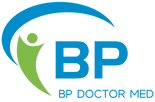Health Smart Watch
The first thing to explain is why choose smart wearable devices to detect blood oxygen saturation, rather than medical devices? In our daily life, there are several scenarios where blood oxygen saturation may need to be detected:
1. When engaging in outdoor sports such as mountaineering. We know that the higher the altitude, the thinner the air, and the lower the oxygen saturation of the human body. When you are engaged in outdoor activities at high altitudes, monitoring blood oxygen saturation can evaluate your physical condition in real
2, drinking. The human body needs three units of oxygen to completely break down one unit of alcohol. Therefore, hypoxia is one of the important manifestations of drunkenness. However, long-term drinkers have developed a certain tolerance for alcohol and hypoxia, and they are basically undetectable when they are slightly drunk. Such people need to pay more attention to monitoring blood oxygen changes when drinking.
3. Carry out high-intensity mental work. The oxygen consumption of the brain accounts for 20% of the oxygen consumption of the whole body. During high-intensity mental work, the oxygen consumption of the brain will inevitably increase. The human body can take in limited oxygen, and the consumption of more and less intake will not only cause dizziness, fatigue, unresponsiveness and other problems, but also cause damage to the brain. People who study or work for a long time every day need to strengthen the monitoring of their blood oxygen saturation.
It can be seen from the above scenarios that people need to monitor their own blood oxygen saturation during specific activities and sports, and have the needs of "convenience" and "immediacy". Although compared with professional medical equipment, smart wearable devices such as sports watches are slightly inferior in data accuracy, but they are better than "dynamic tracking" and "real-time feedback", so they are more suitable for sports enthusiasts.








